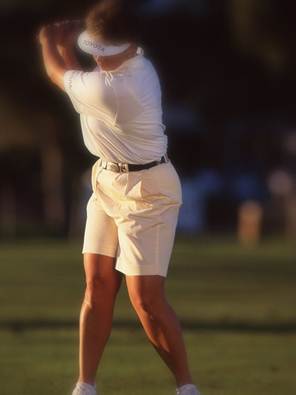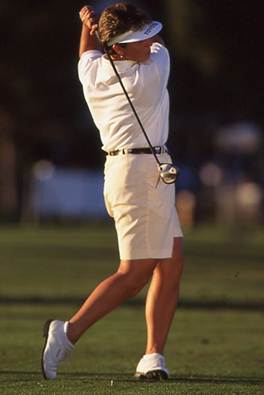Body Release is Driven by Momentum

by Dr. T.J. Tomasi A Legacy Post by Keiser University College of Golf Senior Faculty and Director of Research (1940-2023)
The body’s role in the release of the golf club is passive, in that you don’t force your body to move when you’re playing on the course. The movement is a result of being in the correct position as you start down and then letting momentum take it from there.
Golf Swing Release
The release of the golf swing is a natural culmination of your body’s movement and club’s momentum rather than something forced or manipulated. When it comes to your swing release, it is important to remember that your body’s role in your swing release is passive; it’s about being in the correct position as you start the downswing. If your body is in sync, the release happens smoothly as the clubface squares up through impact. Your hands, arms, and wrists naturally rotate without forcing the motion, allowing for better control and accuracy. Trying to consciously manipulate the release often leads to timing issues and inconsistent contact. Trust the momentum and your swing mechanics to do the work, and the release will feel effortless and powerful.
Types of Golf Swing Releases
There are generally three types of golf swing releases: the early release, the late release, and the neutral release. An early release, often called “casting,” happens when your wrists unhinge too soon, causing a loss of power and a higher, weaker ball flight. Many amateurs struggle with this because they’re eager to hit the ball, but it sacrifices both distance and control. A late release is the opposite—it occurs when you hold off the release too long, creating lag but often leading to thin or pulled shots if mistimed. This type of release can generate a lot of power when done right but is tricky to control.
The neutral release, which is a good release for most golfers, is the sweet spot. Here, your wrists release naturally through impact, with the body, arms, and club working in sync. This type of release maximizes control and shot efficiency, allowing the golfer to hit a more consistent shot. The key to release is finding what complements your swing mechanics while ensuring your swing stays fluid.
To learn more about golf swing releases from the College of Golf YouTube channel.
Golf Release Drill
This graduated release drill will help promote a good release:
- Tee up a ball using your highest lofted fairway wood (a 5-wood is perfect), then take your normal address position, except that your hands are split on the grip.
- Cock your wrists and turn your shoulders as you swing to the top.
- In slow motion, hit the ball by bringing the clubhead to the ball using your body. The split-hand grip will over-rotate your forearms, but don’t worry about the ball flight; what you want is the feel of releasing the clubhead.
- Then go back to address and do it again, but now at full speed.
- Hit five balls with this slow-motion swing and split grip, then hit some at normal speed with your regular grip.
- Once you get the hang of it, alternate between your normal grip and the split grip, focusing on the correct release. If you start to lose it, go back through the steps of the drill.

In her prime, former LPGA Tour player Brandie Burton was an extremely long hitter, and you can see why by looking at her body coil (shoulders turned twice as far as the hips) in the first photo. Then look at the body release through the ball and up into her finish in the next photo. This is what is called a full-body release, where everything she owns is looking at the target — her knees, her belly button, and her nose, to be specific.

Learn more!
Want more tips? If you want to take your game to the next level, contact our team at Keiser University’s College of Golf & Sport Management today. With our dedication and experience, we can elevate your game to new heights together. Give us a call today at 888-355-4465.















Excellent words for the budding golfers. Thank you Keiser University for such beautiful and informative blogs.